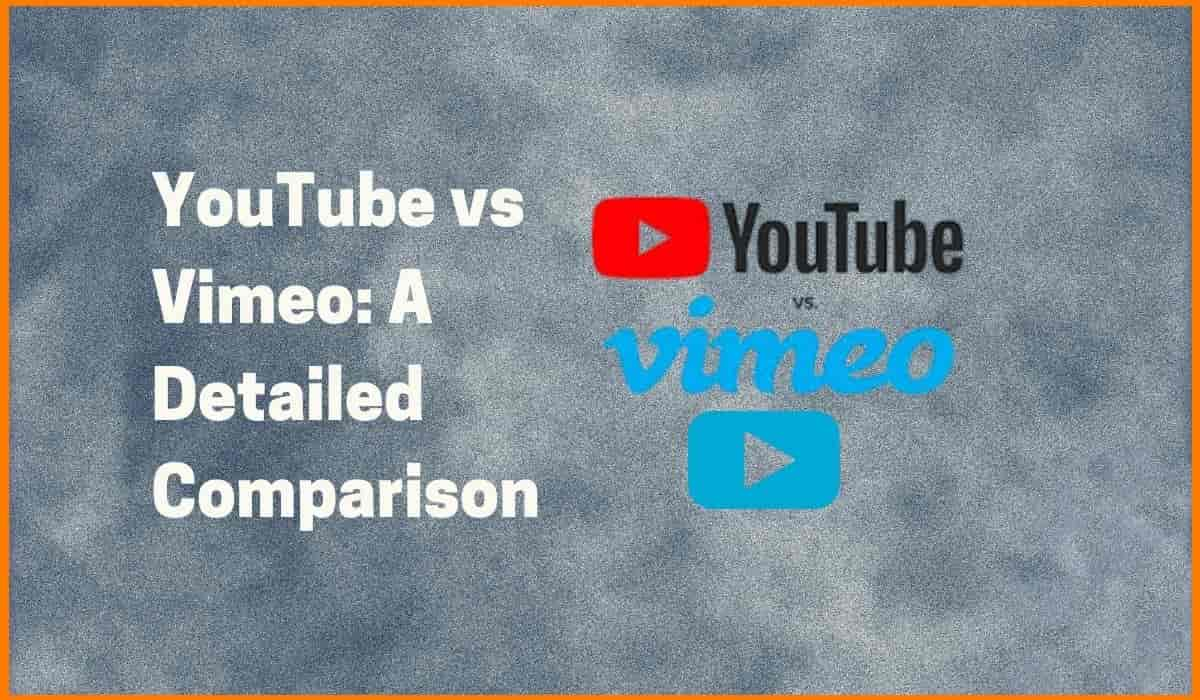YouTube vs Vimeo: A Detailed Comparison
youtube
When it comes to making and posting videos online, YouTube and Vimeo are the two most popular platforms in the market. That’s why the question is often asked about YouTube vs Vimeo, which one is better? They are both amazing video sharing platforms with their respective advantages and disadvantages.
By 2019, video content is predicted to command about 80% of all web traffic. The businesses have to start thinking about how video fits into the long-term marketing strategy and attracting more and more audience, taking it seriously will help the business grow.
Before diving into making videos, it's important to figure out where one is going to host them. YouTube is the largest video hosting platform on the web, but it might not be the best choice for every business.
YouTube has a monopoly over the video-sharing industry and only recently has other services such as Facebook, Instagram and Netflix have risen to pose as a threat. With over 300 hours worth of video being uploaded to the site every minute, YouTube might look virtually indefatigable in the video-sharing space. YouTube also gets over 1.9 billion monthly active users to its site, making it one of the most visited websites in the world.
Compared to YouTube, Vimeo’s stats look tiny. But Vimeo has been around for longer than YouTube and managed to thrive amongst the heavy competition.

YouTube vs Vimeo: Which Platform should be used for Business
| YouTube | Vimeo |
|---|---|
| YouTube was founded in 2005 | Vimoe was founded in 2004 |
| YouTube acts more as a medium where anyone can upload and share their videos | Vimeo is more focused on artists and companies looking to showcase their content |
| YouTube is used to make the content widely visible | Visibility in Vimeo is lower than all measures |
| YouTube thrives on ads in between or starting of the video | Vimoe does not run video ads. Nothing will interrrupt viewer's video |
| Large mix of users, don’t always get constructive comments or feedback | Mostly mature community on Vimeo offer constructive feedback |
| Cannot replace a video with a new version and maintain analytics, but one can trim | Creator can update or replace a video without loosing any stats |
| YouTube can schedule release times, unlisted & private options | It has Password protected option, plus many more |

If one wants to directly upload the videos to a blog, it might be not feasible as some blog sites are not designed to stream videos.
Videos are large files and most hosting providers don’t offer servers optimized for video streaming. If multiple users access videos on the website at once, then this could crash the server.
On top of that, each user has a different type of internet connection. The high quality videos will take forever to load on slower internet connections.
On the other hand, video hosting platforms like YouTube and Vimeo are designed to serve videos. They have server technology and to offer a far superior video streaming experience.
Detailed Comparison Between YouTube and Vimeo
Pricing
YouTube and Vimeo both are profit-making companies. Their pricing options are based on how they make money.
YouTube
YouTube is free. Because they make money by showing advertisements. The advertisements are displayed inside the video, in the sidebar, and inside the YouTube app. It offers a paid subscription called YouTube Red for viewers. This service allows us to get rid of advertisements as well as access YouTube original shows.
However, as a content creator one will be able to upload as many videos as he likes for free. Initially, YouTube won't allow uploading videos longer than 15 minutes. However, the limit is increased by verifying the account.
Vimeo
Vimeo’s business model is quite different than YouTube. They make their money by selling a video hosting services, so publishers and businesses can offer their users an ad free viewing experience. It offers a range of pricing plans starting with the free plan, which is limited to 500 MB of storage per week and 25GB per year.
Users can join Vimeo Plus, Pro, or Business plans. Each one of them offers different upload limits and features. A Free plan is quite limited in terms of storage and features. Users can start with Vimeo Plus, it costs $7 per month and will provide with 5 GB of storage per week.

User base & SEO
YouTube
YouTube is the most visited site in the US and is among the top three worldwide. YouTube has a massive user base and currently has over 1.9 billion monthly active users. Also, YouTube being a Google product means that the users have access to the SEO tools and analytics that Google has to offer for free.
Vimeo
Vimeo currently is the third most popular video site on the internet, just under YouTube and Netflix. Vimeo has only 170 million monthly active users. It is a fraction of YouTube’s monthly active users, but it has 90 million registered users under its various subscription plans. This is not shabby considering the number of monthly users using the platform.
Vimeo also provides its members with precise analytics, SEO tools, and insights stats on views, comments, likes, shares, total plays, and geographical data. But it is only the paid plans that receive to access them.
Branding & Community
YouTube
YouTube is more of a place where anyone can upload their videos and be able to share it with the rest of the world. YouTube can take down videos even without notice in case it violates their changing policies. YouTube also doesn’t focus much on what content is being uploaded – as long as it does not violate any of YouTube’s policies, it is allowed to be uploaded to YouTube.
This is reflected in YouTube’s community and ecosystem as well. You’ll be hard-pressed to find comments that don’t verge on being either too fanboyish or too hateful. That is not to say you won’t be able to get useful or constructive feedback – a diverse group of people use YouTube and for various reasons, which makes obtaining it that much harder.
Vimeo
Vimeo has established itself as the place to be if you’re wanting to share your art with the rest of the like-minded community. Users tend to prefer Vimeo in case they are looking for some high-quality content. This also might be because the fee for accounts with larger upload caps acts as a filter, stopping just about anyone from posting on Vimeo.
This makes Vimeo’s community quite the perfect place to obtain constructive criticism and gets noticed in the professional community. Many companies and brands also tend to prefer uploading their videos on Vimeo first and then to YouTube because of the stability the former offers.
Wrap up
Nothing can stop anyone from using both the sites, depending on the aims for each video. Probably a better idea would be to create a free account with both Vimeo and YouTube and experience both the platforms and see which best suits the aims of your business.
Must have tools for startups - Recommended by StartupTalky
- Convert Visitors into Leads- SeizeLead
- Website Builder SquareSpace
- Manage your business Smoothly Google Business Suite





